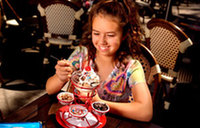Brave new palate
 |
|
Dishes by Redzepi focus on fresh, local ingredients and gastronomic diversity. |
But discovering local Nordic ingredients is only the start. The idea of cooking with diversity came to him after he traveled many times to Thailand, Mexico and Brazil in search of ingredients some years ago.
|
|
Rene says he thought to himself: "OK, let's stop being such self-righteous Westerners. Maybe we are missing out." And he discovered that ants taste like lemongrass and live insects are bottom feeders that are not much different from lobsters, the "very expensive cockroach in the ocean".
Recently a Chinese intern cooked some sea cucumber at the restaurant's weekly team-sharing cooking event.
"It was revolting for a Scandinavian to see that slimy, squelching thing," Redzepi says. "But I always try it, and it turned out to be inspirational. It is always about the taste."
He is impressed by the TV documentary A Bite of China, and says he is astonished to see how people from the Inner Mongolia autonomous region process milk.
"The majority of agricultural land is feeding pigs, but we only have five or six pork dishes," he says.
"It is extraordinarily important to look to other regions around the world to learn ancient ways to cook food and try to adapt it with our ingredients and our microclimate."
In early 2015, Redzepi will move Noma to Japan for two months, to be closer to one of his inspirational sources.
Fifteen years ago, to work directly with farms was unusual for chefs in Scandinavia. Thinking back, Redzepi recognizes the influence of his family's farming background on the fact that Noma works directly with two farms less than an hour's drive away, getting most ingredients from the island of Zealand and the southern tip of Sweden.


















